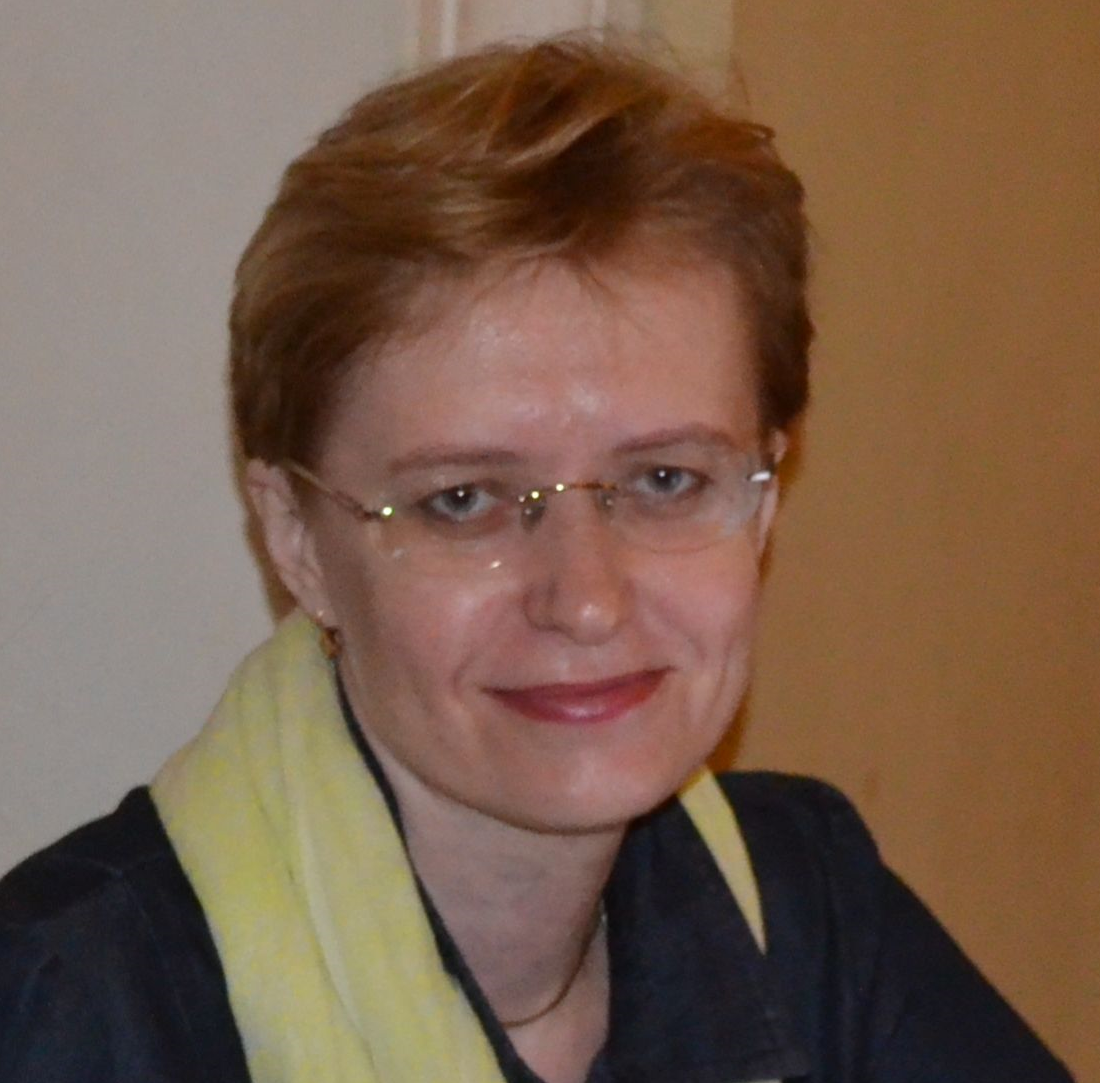Theme: Biopolymers- A drug to heal the nature
Biopolymer Congress 2018
We would like to invites all the participants from all over the world to attend '9th World Congress on Biopolymers & Bioplastics' during August 26-27, 2018 in London, UK, which includes prompt keynote presentations, Oral talks, Poster presentations and Exhibitions.
Biopolymers are chain-like molecules made up of repeating chemical blocks and can be very long in length. Depending on the nature of the repeating unit they are made of polysaccharides, proteins of amino acids, and nucleic acids of nucleotides. The studies are more concerned to Green Composites, Biopolymer Feed Stock Challenges, Biofibers & Microbial Cellulose, Biomaterials and Bioplastics. Advanced studies are being made to improvise developments in Biopolymer Technology, Waste Management, pharmaceutical and biomedical applications, Biodegrade ability, and many more.
Importance and Scope:
Over the past few years, global economic activities have increased a lot. This tremendous growth has raised serious problems about current important patterns of production and consumption. As the current society has increased its attention in understanding of the environmental aspects and its industrial practices, greater attention has been given to the concept of sustainable economic systems that rely on energy from undepletable source and materials. The use of Biologically derived Polymers become as an important component of this global world.
The history of Biopolymer is not a long one. Various reasons are associated with the research and development of Biopolymers. Use of Bioplastics will make a tremendous change and will help rid of the conventional plastics , which is a welcome change.
Why to attend?
Biopolymer Congress 2019 offers a fantastic opportunity to meet and make new contacts in the field of Bio materials, Polymer Science and engineering, by providing collaboration spaces and break-out rooms with tea and lunch for delegates between sessions with invaluable networking time for you. It allows delegates to have issues addressed on Bio materials by recognized global experts who are up to date with the latest developments in the Bio materials field and provide information on new techniques and technologies. This International Biopolymer Materials conference will feature renowned keynote speakers, plenary speeches, young research forum, poster presentations, technical workshops and career guidance sessions.
Target Audience:
- Eminent Scientists of Polymer Science & Chemical Engineering, Green Chemistry
- Polymer Research Professors and research fellows
- Students from Material science, Polymer Science and Technology & Chemical Engineering
- Directors of Polymer Manufacturing companies, Green Chemicals Companies
- Biopolymer Engineers, Polymer Science Engineers & Chemical Engineers
- Members of different Bioploymer, Waste Management,Chemistry,Chemical Engineering associations.
With the successful journey of Biopolymer Congress 2018, Berlin,Germany, Conference Series llc Ltd conferences planned to continue its Biopolymers conference series in London in 2019.
On this auspicious occasion, we would like to invites all the participants across the globe to take part in the “9th World Congress on Biopolymers & Bioplastics” during August 26-27, 2018 London,UK
Biopolymer Congress 2019 offers a fantastic opportunity to meet and make new contacts in the field of Bio materials, Polymer Science and engineering, by providing collaboration spaces and break-out rooms with tea and lunch for delegates between sessions with invaluable networking time for you. It allows delegates to have issues addressed on Bio materials by recognized global experts who are up to date with the latest developments in the Bio materials field and provide information on new techniques and technologies. This International Biopolymer Materials conference will feature renowned keynote speakers, plenary speeches, young research forum, poster presentations, technical workshops and career guidance sessions
Track 1: Natural polymers
Natural polymers are a group of naturally occurring polymers and chemical modifications of these polymers. Cellulose, starch, lignin, chitin, and various polysaccharides are included in this group. These materials research and their outgrowth offer a wide range of properties and applications. Natural polymers are liable to be biodegradable, although the rate of degeneration is generally inversely proportional to the extent of chemical modification for Polymeric Materials. US companies demand for natural polymers is forecast to expand 6.9 percent annually to $4.6 billion in 2016. Cellulose ethers, methyl cellulose, will remain the largest product segment. This study analyzes the $3.3 billion US natural biopolymer industries. It presents historical demand data for the years 2001, 2006 and 2011, and forecasts for 2016 and 2021 by market.
Recommended Biopolymer Conferences | Bioplastics Conferences | Biopolymer Events | Conference Series
Related Conferences
7th International Conference on Biofuels and Bioenergy, October 2-4, 2017 Toronto, Canada; 3rd International Conference on Polymer Science and Engineering, October 2-3 2017 Chicago, USA; 15th Annual Conference on Materials Research and Technology, February 19-20, 2018 Paris, France; 19th World Conference on Materials Science and Engineering, June 11-13, 2018 Barcelona, Spain; World Conference on Biopolymers and Polymer Chemistry, May 28-30, 2018 Osaka, Japan; Annual Conference on Biopolymers and Polymer Chemistry, October 12-13, 2017, Osaka, Japan; 6th Asian Symposium on Emulsion Polymerization and Functional Polymeric Microspheres, March 07- 10, 2018, Fukui, Japan; Conference on Polymers: Design, Function and Application, March 22-23, 2018 Barcelona, Spain; Conference on Polymers and Organic Chemistry, June 04-07, 2018 Montpellier, France; 82nd Polymer Networks and Gels meeting, June 17- 21, 2018 Prague, Czech Republic;
Polymers Societies and Associations
Europe: Applied Chemical Engineering Society (ACES); Association for the Development of Biomaterials; French Chemical Society; Bio-Process Systems Alliance (BPSA); British Plastics Federation; European Council for Plasticizers and Intermediates; European Federation of Chemical Engineering;
USA: American Chemical Society; American Chemical Society; American Coatings Association; Brazilian Polymer Association; Division of Polymer Physics; American Chemical Society(ACS) ; American Physical Society Division of Polymer Physics (APS DPOLY);
Asia- Pacific: ASME BioProcessing Equipment; Australian Society of Biochemistry; Biochemistry Society; Bioenvironmental Polymer Society; IAENG Society of Chemical Engineering; Indian Institute of Chemical Engineers (IIChe);
Track 2: Advanced Biopolymers
Polylactide (PLA) the most promising one of Biopolymers these are a type of plastics which is being manufactured from petrochemicals, generated from sustainable feed stocks such as sugar, starch or Cellulose. Till date, the use of biopolymers, includes the first generation PLA, has been limited by their Physical properties and relatively high cost to manufacture. Next generation biopolymers, are the Plastics component fabrication, Polysaccharides second generation PLA, are to be cheaper and to improve their performance and a wide variety of application to capture an increasing share of the various markets for Biopolymers. Innovations has already achieved significant success with its early investments its $1.5m investment in obesity drug developer return up to $22m, following its sale for $100m in 2013, while the sale of a small molecule drug discovery company, resulted in Innovations realizing $9.5m, a 4.7 return on investment. In year 2015, Innovations invested $14.0m in 20 ventures, helping to launch three new companies.
Recommended Biopolymer Conferences | Bioplastics Conferences | Biopolymer Events | Conference Series
Related Conferences
18th Biotechnology Conference, October 19-20, 2017, New York, USA; 19th World Conference on Biotechnology, November 13-14, 2017 Osaka, Japan; 2nd International Conference and Exhibition on Polymer Chemistry, November 15-17, 2017 San Antonio, USA; 8th International Conference on Environmental Chemistry and Engineering, September 20-22, 2018 Berlin, Germany; 8th European Chemistry Conference, June 21-23, 2018 Paris, France; 24th International Conference on Organic and Inorganic Chemistry, July 18-19, 2018 Atlanta, USA; International Conference on Bio & Disposable Production, 31 Oct 2017 - 01 Nov 2017, Tehran, Iran; 2nd Carbon-Rich Molecules to Carbon-Based Materials conference, June 07- 10, 2018 Nassau, The Bahamas; World Polymer Conference July 01- 05, 2018 Carins, Australia; World Polymer Conference July 01- 06, 2018 Queensland, Australia; 10th International Conference of Modification、Degradation and Stabilization of Polymers, September 02- 06, 2018, Tokyo, Japan;
Biopolymer Societies and Associations:
Europe: European Polymer Federation; European Society for Biomaterials; Federation of European Biochemical Societies; Federation Of European Materials Societies; Federation of European Materials Society; Belgian Polymer Group (BPG); Polymer processing society;
USA: American Society for Biochemistry; Argentinian Association for Chemical Engineers; Canadian Society for Chemical Engineering (CSChE); Canadian Society for Chemistry; Croatian Society of Chemical Engineers; US Chemistry and Biochemistry departments and association;
Asia- Pacific: Israel Institute of Chemical Engineers (IIChe); Italian Chemical Society; Korean Chemical Society; Polymer Division of the Royal Australian Chemical Institute; Society of Chemical Engineers New Zealand; Thai Institute of Chemical Engineering and Applied Chemistry;
Track 3: Bioplastics
Bioplastics are plastics derived from renewable biomass sources, such as vegetable fats and oils, corn starch, or microbiota. Bioplastics can be made from agricultural by-products and also from used plastic bottles and other containers using microorganisms. Common plastics, such as fossil-fuel plastics are derived from petroleum or natural gas. Production of such plastics tends to require more fossil fuels and to produce more greenhouse gases than the production of biobased polymers (bioplastics). Some, but not all, bioplastics are designed to biodegrade. Biodegradable plastics can break down in either anaerobic or aerobic environments, depending on how they are manufactured. Bioplastics can be composed of starches, cellulose, biopolymers, and a variety of other materials.
Recommended Biopolymer Conferences | Bioplastics Conferences | Biopolymer Events | Conference Series
Related Conferences
2nd International Conference and Exhibition on Polymer Chemistry, November 15-17, 2017 San Antonio, USA; 3rd International Conference on Polymer Science and Engineering, October 2-3 2017 Chicago, USA; World Conference on Biopolymers and Polymer Chemistry, May 28-30, 2018 Osaka, Japan; 7th International Conference on Biofuels and Bioenergy, October 2-4, 2017 Toronto, Canada; 18th Biotechnology Conference, October 19-20, 2017, New York, USA; 19th World Conference on Biotechnology, November 13-14, 2017 Osaka, Japan; 11th World Bioenergy Conference and Expo, July 02-04, 2018 Berlin, Germany; Annual Conference on Biopolymers and Polymer Chemistry, October 12-13, 2017, Osaka, Japan; 4th Functional Polymeric Materials Conference, June 05-08, 2018, Nassau, The Bahamas; The European Biopolymer Summit 2018, February 14- 15, 2018 Dusseldorf, Germany; 2nd International Conference on Biopolymers & Polymer Chemistry, October 23 - 25, 2017 Abu Dhabi, Abu Dhabi; Annual Conference on Biopolymers and Polymer Chemistry, October 12-13, 2017 Osaka, Japan;
Bioplastics Societies and Associations:
Europe: Society for Biomaterials; Society of Chemical Engineers; Society of Chemical Industry; Society of Polymer Science; The Chemical Engineering Graduate Student Association (ChEGSA); The polymer society; The Scandinavian Society for Biomaterials
USA: American Chemical Society; American Chemical Society; American Coatings Association; Brazilian Polymer Association; Division of Polymer Physics; American Chemical Society(ACS) ; American Physical Society Division of Polymer Physics (APS DPOLY);
Asia- Pacific: ASME BioProcessing Equipment; Australian Society of Biochemistry; Biochemistry Society; Bioenvironmental Polymer Society; IAENG Society of Chemical Engineering; Indian Institute of Chemical Engineers (IIChe);
Track 4: Bioinformatics
Bioinformatics is an interdisciplinary field that develops methods and software tools for understanding biological data. As an interdisciplinary field of science, bioinformatics combines computer science, statistics, mathematics, and engineering to analyze and interpret biological data. Bioinformatics has been used for in silico analyses of biological queries using mathematical and statistical techniques.
Recommended Biopolymer Conferences | Bioplastics Conferences | Biopolymer Events | Conference Series
Related Conferences
9th International Conference on Bioinformatics, November 13-14, 2017 Paris, France; 10th International Conference on Proteomics and Bioinformatics, May 17-18, 2018 Singapore; World Conference on Green Chemistry and Green Engineering, July 16-18, 2018 Melbourne, Australia; International Conference on Computational Biology and Bioinformatics, Aug 24-25, 2018 Tokyo, Japan; World Conference on Green Chemistry and Green Engineering, July 16-18, 2018 Melbourne, Australia; International Conference on Bio & Disposable Production, 31 Oct 2017 - 01 Nov 2017, Tehran, Iran; 2nd Carbon-Rich Molecules to Carbon-Based Materials conference, June 07- 10, 2018 Nassau, The Bahamas; 22nd International Conference on Organic Synthesis, September 16- 21, Florence, Italy; 6th Conference on Carbon Dioxide as Feedstock for Fuels, Chemistry and Polymers, March 15- 16, 2018 Cologne, Germany; Annual Conference on Biopolymers and Polymer Chemistry, October 12-13, 2017 Osaka, Japan;
Bioinformatics Societies and Associations:
Europe: Applied Chemical Engineering Society (ACES); Association for the Development of Biomaterials; French Chemical Society; Bio-Process Systems Alliance (BPSA); British Plastics Federation; European Council for Plasticizers and Intermediates; European Federation of Chemical Engineering;
USA: American Society for Biochemistry; Argentinian Association for Chemical Engineers; Canadian Society for Chemical Engineering (CSChE); Canadian Society for Chemistry; Croatian Society of Chemical Engineers; US Chemistry and Biochemistry departments and association;
Asia- Pacific: Israel Institute of Chemical Engineers (IIChe); Italian Chemical Society; Korean Chemical Society; Polymer Division of the Royal Australian Chemical Institute; Society of Chemical Engineers New Zealand; Thai Institute of Chemical Engineering and Applied Chemistry;
Track 5: Biopolymers as materials
Polymer Nano composites (PNC) are made of a polymers or copolymers having nanoparticles or Nano fillers dispersed in the polymer matrix. The plastic used for food packaging and non-food applications is non-biodegradable, and also of valuable and scarce non-renewable resources like petroleum. With the current research on exploring the alternatives to petrol and priority on reduced environmental impact, research is increased in development of biodegradable packaging from biopolymer-based materials. A biomaterial is a surface, or construct that interacts with biological systems. These biomaterials are about fifty years old. The study of such materials is called biomaterials science. It has been seen a strong growth over its past period, were many companies have been investing large amounts in the development of new products. Biomaterials science is the elements of medicine, biology, chemistry, tissue engineering and materials science. The Biomaterial market over the forecast period of 2012-2017 market for biomaterials is likely to predict to $44.0 billion in 2012 and is steady to grow at a CAGR of 15% from 2012 to 2017 to reach $88.4 billion by 2017.
Recommended Biopolymer Conferences | Bioplastics Conferences | Biopolymer Events | Conference Series
Related Conferences
7th International Conference on Biofuels and Bioenergy, October 2-4, 2017 Toronto, Canada; 18th Biotechnology Conference, October 19-20, 2017, New York, USA; 19th World Conference on Biotechnology, November 13-14, 2017 Osaka, Japan; 8th International Conference on Environmental Chemistry and Engineering, September 20-22, 2018 Berlin, Germany; 8th European Chemistry Conference, June 21-23, 2018 Paris, France; International Conference on Bio & Disposable Production, 31 Oct 2017 - 01 Nov 2017, Tehran, Iran; 6th Asian Symposium on Emulsion Polymerization and Functional Polymeric Microspheres, March 07- 10, 2018, Fukui, Japan; 2nd Carbon-Rich Molecules to Carbon-Based Materials conference, June 07- 10, 2018 Nassau, The Bahamas; 4th International Conference on Bio-based Polymers and Composites, September 02-06, 2018 Balatonfüred, Hungary; 10th International Conference of Modification、Degradation and Stabilization of Polymers, September 02- 06, 2018, Tokyo, Japan;
Biopolymer Societies and Associations:
Europe: European Polymer Federation; European Society for Biomaterials; Federation of European Biochemical Societies; Federation Of European Materials Societies; Federation of European Materials Society; Belgian Polymer Group (BPG); Polymer processing society;
USA: American Chemical Society; American Chemical Society; American Coatings Association; Brazilian Polymer Association; Division of Polymer Physics; American Chemical Society(ACS) ; American Physical Society Division of Polymer Physics (APS DPOLY);
Asia- Pacific: ASME BioProcessing Equipment; Australian Society of Biochemistry; Biochemistry Society; Bioenvironmental Polymer Society; IAENG Society of Chemical Engineering; Indian Institute of Chemical Engineers (IIChe);
Track 6: Green Composites in Biopolymers
The Green composites are the composite materials that are been made from both renewable resource based polymers (biopolymers) and biofiller. These green composites are recyclable, renewable, triggered biodegradable and could reduce the dependency of the fossil fuel to a great extent when used in interior applications. Green composites have major applications in automotive interiors, interior building applications and major packaging areas. Despite having large number of recent reviews on green composites it defined as biopolymers or bio-derived polymers reinforced with natural fibers for bioprocessing of these materials, limited investigation has taken place into the most appropriate applications for these materials. The Global composite materials industry reached $19.6B in 2011, making an annual increase of 8.2% from 2010. Market value of end use products made with composites was $55.6B in 2011. North American composites industry accelerated by 9 % in 2014, Europe increased by 8%while Asia grew by 7% in 2015. By 2017, composite materials industry is expected to reach $ 29.9B (7% CAGR) while end products made with composite materials market value is expected to reach $85B the Global Automotive composite materials market has estimated to be around $ 2.8 B in 2015, and forecast to reach $ 4.3 B by 2017 @ CAGR of approx. 7%.
Recommended Biopolymer Conferences | Bioplastics Conferences | Biopolymer Events | Conference Series
Related Conferences
24th International Conference on Organic and Inorganic Chemistry, July 18-19, 2018 Atlanta, USA; 2nd International Conference on Biochemistry, September 28-29, 2017 Dubai, UAE; 10th Annual Chemistry Conference, October 18-19, 2017 Osaka, Japan; World Conference on Green Chemistry and Green Engineering, July 16-18, 2018 Melbourne, Australia; 15th World Medical Nanotechnology Conference, October 18-19, 2017 Osaka, Japan; 22nd International Conference on Organic Synthesis, September 16- 21, Florence, Italy; BIO World Conference on Industrial Biotechnology, July 16-19, 2018 | Philadelphia, Pennsylvania; 22nd Annual Green Chemistry & Engineering Conference, June 18-20, 2018 Portland, Oregon; 2nd Global Bioeconomy Summit, April 19-20, 2018 Berlin, Germany; World Bio Markets, March 20-22 Amsterdam, Netherlands; 6th Conference on Carbon Dioxide as Feedstock for Fuels, Chemistry and Polymers, March 15- 16, 2018 Cologne, Germany
Green Composites Societies and Associations:
Europe: Society for Biomaterials; Society of Chemical Engineers; Society of Chemical Industry; Society of Polymer Science; The Chemical Engineering Graduate Student Association (ChEGSA); The polymer society; The Scandinavian Society for Biomaterials
USA: American Society for Biochemistry; Argentinian Association for Chemical Engineers; Canadian Society for Chemical Engineering (CSChE); Canadian Society for Chemistry; Croatian Society of Chemical Engineers; US Chemistry and Biochemistry departments and association;
Asia- Pacific: Israel Institute of Chemical Engineers (IIChe); Italian Chemical Society; Korean Chemical Society; Polymer Division of the Royal Australian Chemical Institute; Society of Chemical Engineers New Zealand; Thai Institute of Chemical Engineering and Applied Chemistry;
Track7: Biopolymers for Tissue Engineering
Tissue engineering is the immense area of research in recent years because of its vast potential in the repair or replacement of impaired tissues and organs. The present research will focus on scaffolds as they are one of the three most important factors, including seed cells, growth hormones and scaffolds in tissue engineering. Among the polymers used in tissue engineering, polyhydroxy esters (such as PLA, PGA, and PLGA) have extensive attention for a variety of biomedical applications. Besides, PCL has been widely used as a tissue engineering scaffold. Scaffolds have been used for tissue engineering such as bone, cartilage, ligament, skin, vascular tissues, neural tissues, and skeletal muscle and as vehicle for the delivery of drugs, proteins, and DNA. The worldwide market for tissue engineering and regeneration products reached $55.9B in 2010, is expected to reach $59.8B by 2013, and will further grow to $89.7B by 2016 at a compounded annual growth rate (CAGR) of 8.4%.
Recommended Biopolymer Conferences | Bioplastics Conferences | Biopolymer Events | Conference Series
Related Conferences
7th International Conference on Tissue Engineering & Regenerative Medicine, October 02-04, 2017 Barcelona, Spain; 10th World Conference and Expo on Cell & Stem Cell Research, March 19-21, 2018 New York, USA; 11th World Conference on Cell & Tissue Science, May 14-15, 2018 Tokyo, Japan; 4th International Conference on Synthetic Biology and Tissue Engineering, June 11-12, 2018 Rome, Italy; 9th International Conference on Tissue Science and Regenerative Medicine, July 19-20, 2018 Melbourne, Australia; Conference on Polymers and Organic Chemistry, June 04-07, 2018 Montpellier, France; 2nd Carbon-Rich Molecules to Carbon-Based Materials conference, June 07- 10, 2018 Nassau, The Bahamas; 82nd Polymer Networks and Gels meeting, June 17- 21, 2018 Prague, Czech Republic; 10th International Conference of Modification、Degradation and Stabilization of Polymers, September 02- 06, 2018, Tokyo, Japan; ECO- BIO March 04- 07, 2018 Dublin, Ireland;
Tissue Engineering Societies and Associations:
Europe: Applied Chemical Engineering Society (ACES); Association for the Development of Biomaterials; French Chemical Society; Bio-Process Systems Alliance (BPSA); British Plastics Federation; European Council for Plasticizers and Intermediates; European Federation of Chemical Engineering;
USA: American Chemical Society; American Chemical Society; American Coatings Association; Brazilian Polymer Association; Division of Polymer Physics; American Chemical Society(ACS) ; American Physical Society Division of Polymer Physics (APS DPOLY);
Asia- Pacific: ASME BioProcessing Equipment; Australian Society of Biochemistry; Biochemistry Society; Bioenvironmental Polymer Society; IAENG Society of Chemical Engineering; Indian Institute of Chemical Engineers (IIChe);
Track 8: Biopolymers in Biomedical Applications
Biodegradable polymers have many uses in the biomedical field, that to in the fields of tissue engineering and drug delivery. In order for us to use biodegradable polymer as a therapeutic, it should undergo certain criteria: it should be non-toxic so that it could eliminate foreign body response; The time it takes for the polymers to degrade is proportional to the time required for therapy; The products resulting from biodegradation are not cytotoxic and are readily eliminated from the body; The material must be easily processed in order to tailor the mechanical properties for the required task; It should be easily sterilized; and it should have acceptable shelf life.
Recommended Biopolymer Conferences | Bioplastics Conferences | Biopolymer Events | Conference Series
Related Conferences
3rd International Conference on Polymer Science and Engineering, October 2-3 2017 Chicago, USA; 14th International Conference and Exhibition on Materials Science and Engineering, November 13-15, 2017 Las Vegas, Nevada, USA; 15th Annual Conference on Materials Research and Technology, February 19-20, 2018 Paris, France; 5th World Conference on Smart and Emerging Materials, March 19-20, 2018 Bali, Indonesia; 16th International Conference on Emerging Materials and Nanotechnology, Mar 22-23, 2018 London, UK; 19th World Conference on Materials Science and Engineering, June 11-13, 2018 Barcelona, Spain; ECO- BIO March 04- 07, 2018 Dublin, Ireland; The European Biopolymer Summit 2018, February 14- 15, 2018 Dusseldorf, Germany; 9th European Symposium on Biopolymers, July 5-7, 2018 Toulouse, France; 2nd International Conference on Biopolymers & Polymer Chemistry, October 23 - 25, 2017 Abu Dhabi, Abu Dhabi; World Conference on Biopolymers and Polymer Chemistry, May 28-30, 2018 Osaka, Japan; Annual Conference on Biopolymers and Polymer Chemistry, October 12-13, 2017 Osaka, Japan;
Biomedical Societies and Associations:
Europe: European Polymer Federation; European Society for Biomaterials; Federation of European Biochemical Societies; Federation Of European Materials Societies; Federation of European Materials Society; Belgian Polymer Group (BPG); Polymer processing society;
USA: American Society for Biochemistry; Argentinian Association for Chemical Engineers; Canadian Society for Chemical Engineering (CSChE); Canadian Society for Chemistry; Croatian Society of Chemical Engineers; US Chemistry and Biochemistry departments and association;
Asia- Pacific: Israel Institute of Chemical Engineers (IIChe); Italian Chemical Society; Korean Chemical Society; Polymer Division of the Royal Australian Chemical Institute; Society of Chemical Engineers New Zealand; Thai Institute of Chemical Engineering and Applied Chemistry;
Track 9: Recycling & Waste Management of Biopolymers
Biobased polymers lead not only on the raw materials side but also on the other side through certain promising end-of-life (EOL) options. Exclusively waste disposal with energy recovery has an added advantage, which lies in benefiting carbon neutral energy while allowing multiple uses of possible recycling. The recent commission after research said that all of the composts contain biodegradable polymers materials could be classified using a risk assessment system at a higher toxicity position. Biodegradable polymers waste can serve for aerobic degradation, composting, or anaerobic digestion. When biopolymers are propagated or digested, their individual elements are recycled naturally in particular in their carbon and hydrogen content. The greater segment of the market, packaging, is expected to reach nearly 1.7 Billion Pounds in 2016. The world market in 2011 estimated at 656 Million Pounds, making the five-year CAGR 20.5%. The second-largest market segment, made up of fibers/fabrics is expected to increase in volume from an estimated 134 million pounds in 2011 to 435 million pounds in 2016, for a five-year CAGR of 26.6%.
Recommended Biopolymer Conferences | Bioplastics Conferences | Biopolymer Events | Conference Series
Related Conferences
18th International Conference and Exhibition on Materials Science and Engineering, May 28-30, 2018 Osaka, Japan; 21st International Conference on Advanced Materials & Nanotechnology, September 04-06, 2018 Zürich, Switzerland; World Conference on Biopolymers and Polymer Chemistry, May 28-30, 2018 Osaka, Japan; 11th World Bioenergy Conference and Expo, July 02-04, 2018 Berlin, Germany; 2nd International Conference on Renewable Energy and Resources, August 27-28, Boston, USA; 6th Asia Pacific Conference on Chemical and Biochemical Engineering, September 19-20, 2018 Macau, Hong Kong; Annual Conference on Biopolymers and Polymer Chemistry, October 12-13, 2017, Osaka, Japan; International Conference on Bio & Disposable Production, 31 Oct 2017 - 01 Nov 2017, Tehran, Iran; 6th Asian Symposium on Emulsion Polymerization and Functional Polymeric Microspheres, March 07- 10, 2018, Fukui, Japan; Conference on Polymers: Design, Function and Application, March 22-23, 2018 Barcelona, Spain; Conference on Polymers and Organic Chemistry, June 04-07, 2018 Montpellier, France; 4th Functional Polymeric Materials Conference, June 05-08, 2018, Nassau, The Bahamas; 2nd Carbon-Rich Molecules to Carbon-Based Materials conference, June 07- 10, 2018 Nassau, The Bahamas; 82nd Polymer Networks and Gels meeting, June 17- 21, 2018 Prague, Czech Republic;
Recycling Societies and Associations:
Europe: Society for Biomaterials; Society of Chemical Engineers; Society of Chemical Industry; Society of Polymer Science; The Chemical Engineering Graduate Student Association (ChEGSA); The polymer society; The Scandinavian Society for Biomaterials
USA: American Chemical Society; American Chemical Society; American Coatings Association; Brazilian Polymer Association; Division of Polymer Physics; American Chemical Society(ACS) ; American Physical Society Division of Polymer Physics (APS DPOLY);
Asia- Pacific: ASME BioProcessing Equipment; Australian Society of Biochemistry; Biochemistry Society; Bioenvironmental Polymer Society; IAENG Society of Chemical Engineering; Indian Institute of Chemical Engineers (IIChe);
Track 10: Biopolymers in Biofibers & Microbial Cellulose
Cellulose the most generous natural biopolymer on the earth, synthesized by plants, algae and also some species of bacteria and micro organisms. The Plant derivative cellulose and Black Carbon (BC) have the same chemical composition but differ in structure and physical properties. The BC network structure comprises cellulose Nano fibrils 3-8 nm in diameter, and the crystalline regions are been the normal cellulose I. The properties such as the Nano metric structure, unique physical and mechanical properties together produce higher purity that lead to great number of commercial products. Lignocellulosic agricultural byproducts are an extensive and cheap source for cellulose fibers. Agro-based biofibers have the architecture, properties and design that make them suitable for use as composite, textile, pulp and paper manufacture. In addition, biofibers can be used to produce biofuel, chemicals, enzymes and food. The global bio-fiber composites market reached $2.1Bil in 2010, with CAGR of 15% in last five years. Among them, the automotive and construction industry were the greater application segments. By 2016, this natural fiber composite market is expected to reach $ 3.8B (10% CAGR).
Recommended Biopolymer Conferences | Bioplastics Conferences | Biopolymer Events | Conference Series
Related Conferences
7th International Conference on Biofuels and Bioenergy, October 2-4, 2017 Toronto, Canada; 18th Biotechnology Conference, October 19-20, 2017, New York, USA; 19th World Conference on Biotechnology, November 13-14, 2017 Osaka, Japan; 2nd International Conference and Exhibition on Polymer Chemistry, November 15-17, 2017 San Antonio, USA; 8th International Conference on Environmental Chemistry and Engineering, September 20-22, 2018 Berlin, Germany; World Polymer Conference July 01- 05, 2018 Carins, Australia; World Polymer Conference July 01- 06, 2018 Queensland, Australia; 4th International Conference on Bio-based Polymers and Composites, September 02-06, 2018 Balatonfüred, Hungary; 10th International Conference of Modification、Degradation and Stabilization of Polymers, September 02- 06, 2018, Tokyo, Japan; 22nd International Conference on Organic Synthesis, September 16- 21, Florence, Italy;
Biopolymer Societies and Associations:
Europe: Applied Chemical Engineering Society (ACES); Association for the Development of Biomaterials; French Chemical Society; Bio-Process Systems Alliance (BPSA); British Plastics Federation; European Council for Plasticizers and Intermediates; European Federation of Chemical Engineering;
USA: American Society for Biochemistry; Argentinian Association for Chemical Engineers; Canadian Society for Chemical Engineering (CSChE); Canadian Society for Chemistry; Croatian Society of Chemical Engineers; US Chemistry and Biochemistry departments and association;
Asia- Pacific: Israel Institute of Chemical Engineers (IIChe); Italian Chemical Society; Korean Chemical Society; Polymer Division of the Royal Australian Chemical Institute; Society of Chemical Engineers New Zealand; Thai Institute of Chemical Engineering and Applied Chemistry;
Track 11: Biopolymers Feed Stock Challenges & opportunities
Bio related products can restore petroleum-related products, new methodologies, where various types of lignocellulosic biomass experience bioprocessing to commercially important products, must be devised. A relatively low value lignocellulosic biomass that could be used to produce bio based co-products is grass. Currently, many grasses are largely took the advantage for cropping by livestock or harvested as hay. To exploit this opportunity, the feasibility of using microbial bioconversion for the production of chemicals and polysaccharide gums from the fermentable sugars present in hydrolysates of various grass species. The production of 2.5 g/l was obtained when the cells were grown on medium containing 70 mM sucrose and 0.2% (w/v) Casamino Acids. It enriched medium is maximum biopolymers production of up to 3.4 g/laws was obtained.
Recommended Biopolymer Conferences | Bioplastics Conferences | Biopolymer Events | Conference Series
Related Conferences
8th European Chemistry Conference, June 21-23, 2018 Paris, France; 24th International Conference on Organic and Inorganic Chemistry, July 18-19, 2018 Atlanta, USA; 2nd International Conference on Biochemistry, September 28-29, 2017 Dubai, UAE; 10th Annual Chemistry Conference, October 18-19, 2017 Osaka, Japan; World Conference on Green Chemistry and Green Engineering, July 16-18, 2018 Melbourne, Australia; 15th World Medical Nanotechnology Conference, October 18-19, 2017 Osaka, Japan; BIO World Conference on Industrial Biotechnology, July 16-19, 2018 | Philadelphia, Pennsylvania; 22nd Annual Green Chemistry & Engineering Conference, June 18-20, 2018 Portland, Oregon; 2nd Global Bioeconomy Summit, April 19-20, 2018 Berlin, Germany; World Bio Markets, March 20-22 Amsterdam, Netherlands;
Biopolymer Societies and Associations:
Europe: European Polymer Federation; European Society for Biomaterials; Federation of European Biochemical Societies; Federation Of European Materials Societies; Federation of European Materials Society; Belgian Polymer Group (BPG); Polymer processing society;
USA: American Chemical Society; American Chemical Society; American Coatings Association; Brazilian Polymer Association; Division of Polymer Physics; American Chemical Society(ACS) ; American Physical Society Division of Polymer Physics (APS DPOLY);
Asia- Pacific: ASME BioProcessing Equipment; Australian Society of Biochemistry; Biochemistry Society; Bioenvironmental Polymer Society; IAENG Society of Chemical Engineering; Indian Institute of Chemical Engineers (IIChe);
Track 12: Future & Scope of Biopolymers
Futures of Biopolymers demand the manufacturer for new materials is overwhelming. However the cost-effectiveness of the materials must progress as they are contributed specifically for sustainable development. Applications by the use of new materials should utilize the properties of these polymers, and the products should be developed based on those properties. They are onset to arrive as a result to be more responsible in taking care of the world we live in. Thus, the recent development for the bio-based products rather than petroleum or natural gas based products. The use of biopolymers could markedly increase as more reliable form for the development and the cost to manufacture these bioplastics continues to go fall. Bioplastics can be replaced with conventional plastics in the field of application which can be used in various categories such as food packaging, plastic plates, cups, cutlery, plastic storage bags, storage containers or other plastic or composite materials items you are buying and therefore can help in making environment sustainable. Bio-based polymers are adjacent to the conventional polymers than ever before. Now a day, biobased polymers are commonly found in various applications from commodity to hi-tech applications due to advance research development in biotechnology and public awareness.
Recommended Biopolymer Conferences | Bioplastics Conferences | Biopolymer Events | Conference Series
Related Conferences
3rd International Conference on Polymer Science and Engineering, October 2-3 2017 Chicago, USA; 14th International Conference and Exhibition on Materials Science and Engineering, November 13-15, 2017 Las Vegas, Nevada, USA; 15th Annual Conference on Materials Research and Technology, February 19-20, 2018 Paris, France; 5th World Conference on Smart and Emerging Materials, March 19-20, 2018 Bali, Indonesia; 16th International Conference on Emerging Materials and Nanotechnology, Mar 22-23, 2018 London, UK; 19th World Conference on Materials Science and Engineering, June 11-13, 2018 Barcelona, Spain; 6th Conference on Carbon Dioxide as Feedstock for Fuels, Chemistry and Polymers, March 15- 16, 2018 Cologne, Germany; ECO- BIO March 04- 07, 2018 Dublin, Ireland; The European Biopolymer Summit 2018, February 14- 15, 2018 Dusseldorf, Germany; 9th European Symposium on Biopolymers, July 5-7, 2018 Toulouse, France; 2nd International Conference on Biopolymers & Polymer Chemistry, October 23 - 25, 2017 Abu Dhabi, Abu Dhabi; World Conference on Biopolymers and Polymer Chemistry, May 28-30, 2018 Osaka, Japan; Annual Conference on Biopolymers and Polymer Chemistry, October 12-13, 2017 Osaka, Japan;
Biopolymer Societies and Associations:
Europe: Society for Biomaterials; Society of Chemical Engineers; Society of Chemical Industry; Society of Polymer Science; The Chemical Engineering Graduate Student Association (ChEGSA); The polymer society; The Scandinavian Society for Biomaterials
USA: American Society for Biochemistry; Argentinian Association for Chemical Engineers; Canadian Society for Chemical Engineering (CSChE); Canadian Society for Chemistry; Croatian Society of Chemical Engineers; US Chemistry and Biochemistry departments and association;
Asia- Pacific: Israel Institute of Chemical Engineers (IIChe); Italian Chemical Society; Korean Chemical Society; Polymer Division of the Royal Australian Chemical Institute; Society of Chemical Engineers New Zealand; Thai Institute of Chemical Engineering and Applied Chemistry;
Biopolymer Congress 2019
Theme: Biopolymers- A drug to heal the nature
Summary:
Biopolymer Congress 2019 is the platform to gain or share the knowledge in the new technological developments in the field of polymers, Bioplastics, Bio materials, Polymer Science and tissue engineering. This conference brings together professors, researchers, scientists, students in all the areas of Bio materials, Polymer Science and provides an international forum for the spreading of approved research. We are honored to invite you all to attend and register for the “9th World Congress on Biopolymers (Biopolymer Congress 2019)” which is scheduled for August 26- 27, 2019, London,UK
The organizing committee is gearing up for an exciting and informative conference program this year also which includes plenary lectures, symposia, workshops on a variety of topics, poster presentations and various programs for participants from all over the world. We invite you to join us at the Biopolymer Congress 2018, where you will be sure to have a meaningful experience with scholars from around the world. All members of the Biopolymer Congress organizing committee look forward to meeting you in Berlin, Germany.
For more details please visit: https://biopolymers.insightconferences.com//
Importance & Scope:
Over the past few years, global economic activities have increased a lot. This tremendous growth has raised serious problems about current important patterns of production and consumption. As the current society has increased its attention in understanding of the environmental aspects and its industrial practices, greater attention has been given to the concept of sustainable economic systems that rely on energy from undepletable source and materials. The use of biologically derived Polymers become as an important component of this global world.
The history of Biopolymer is not a long one. Various reasons are associated with the research and development of Biopolymers. Use of Bioplastics will make a tremendous change and will help rid of the conventional plastics, which is a welcome change.
Why London?
Berlin is the capital and the largest city of Germany as well as one of its 16 constituent states. It has a population of 3.7 million. In the terms of population, Berlin is the Second most populous city in the European Union and the seventh most populous urban area in the European Union.
Berlin is rich in history, Culture and Science. Berlin is a worldwide city of culture, governmental issues, media and science. Its economy depends on cutting edge firms and the administration part, including a different scope of inventive enterprises; investigate offices, media companies and tradition scenes. Berlin fills in as a mainland center point for air and rail activity and has a very mind boggling open transportation arrange. The city is a mainstream traveler destination. Significant businesses likewise incorporate IT, pharmaceuticals, biomedical designing, clean tech, biotechnology, development and hardware.
Modern Berlin is the home for many universities, orchestras, museums, entertainment venues and is host to many sporting events. The city is well known for its festivals, diverse architecture, nightlife, contemporary arts and a high quality of living.
Moreover the market of Biopolymers is very rich in Germany for Europe followed by Italy and France.
Why to attend?
Biopolymer Congress 2018 offers a fantastic opportunity to meet and make new contacts in the field of Bio materials, Polymer Science, Tisse engineering, Bioplastic and materials science. By providing collaboration spaces and break-out rooms with tea and lunch for delegates between sessions with invaluable networking time for you. It allows delegates to have issues addressed on Bio materials by recognized global experts who are up to date with the latest developments in the Bio materials field and provide information on new techniques and technologies. This International Biopolymer Materials conference will feature renowned keynote speakers, plenary speeches, young research forum, poster presentations, technical workshops and career guidance sessions.
For more information click here
Conference Highlights
- Natural Polymers
- Advanced Biopolymers
- Bioplastics
- Bioinformatics
- Biopolymer Applications
- Biopolymers as Materials
- Green Composites in Biopolymers
- Biopolymers for Tissue Engineering and Regenerative Medicine
- Biodegradable polymers
- Biopolymers in Biomedical Applications
- Biopolymers in Biofibers & Microbial Cellulose
- Recycling & Waste management of Biopolymers
- Future & Scope of Biopolymers
- Biopolymer Companies & Market
To share your views and research, please click here to register for the Conference.
To Collaborate Scientific Professionals around the World
| Conference Date | June 28-29, 2018 | ||
| Sponsors & Exhibitors |
|
||
| Speaker Opportunity Closed | Day 1 | Day 2 | |
| Poster Opportunity Closed | Click Here to View | ||
Useful Links
Special Issues
All accepted abstracts will be published in respective Our International Journals.
- Journal of Chemical Engineering & Process Technology
- Journal of Bioremediation & Biodegradation
- Journal of Advanced Chemical Engineering
Abstracts will be provided with Digital Object Identifier by

































